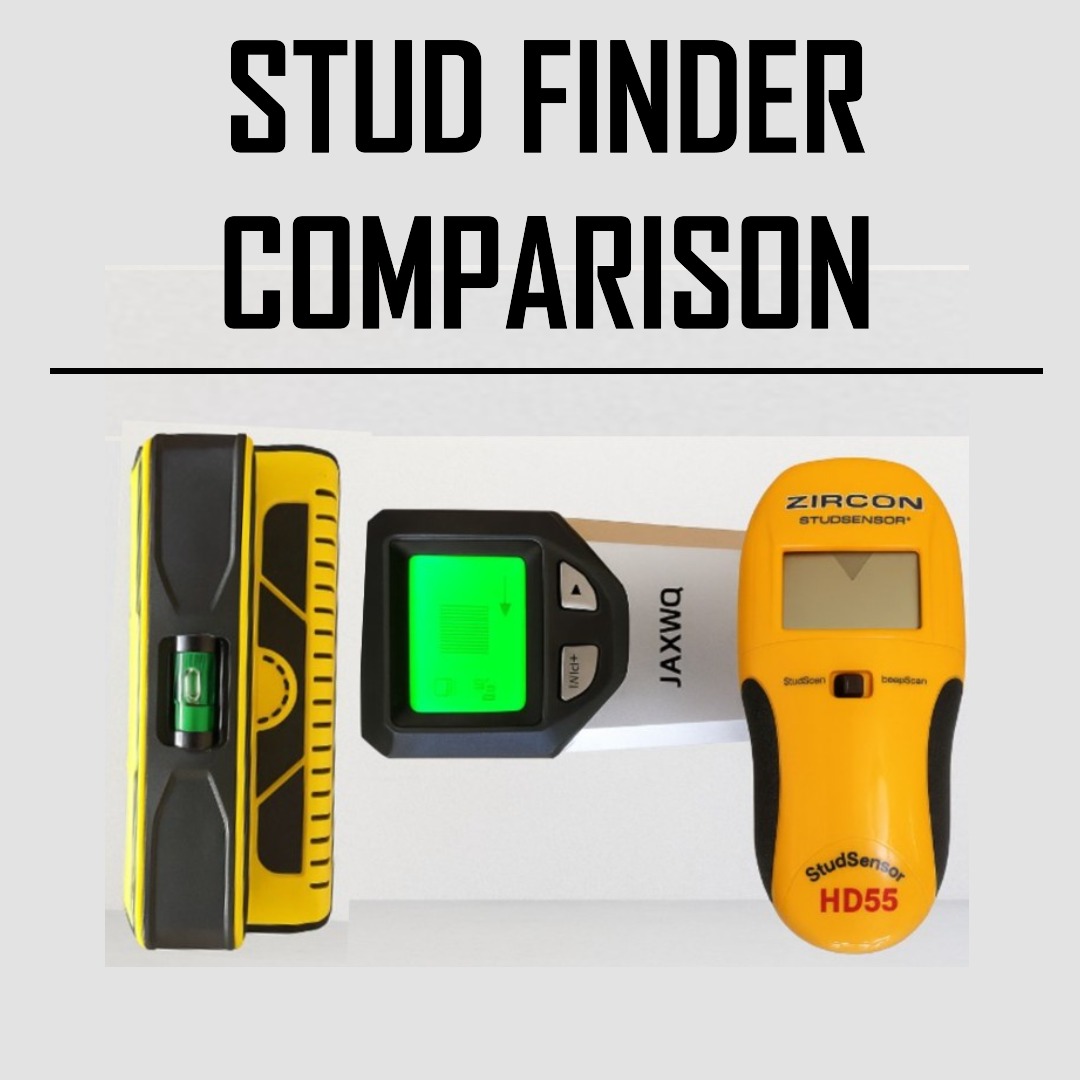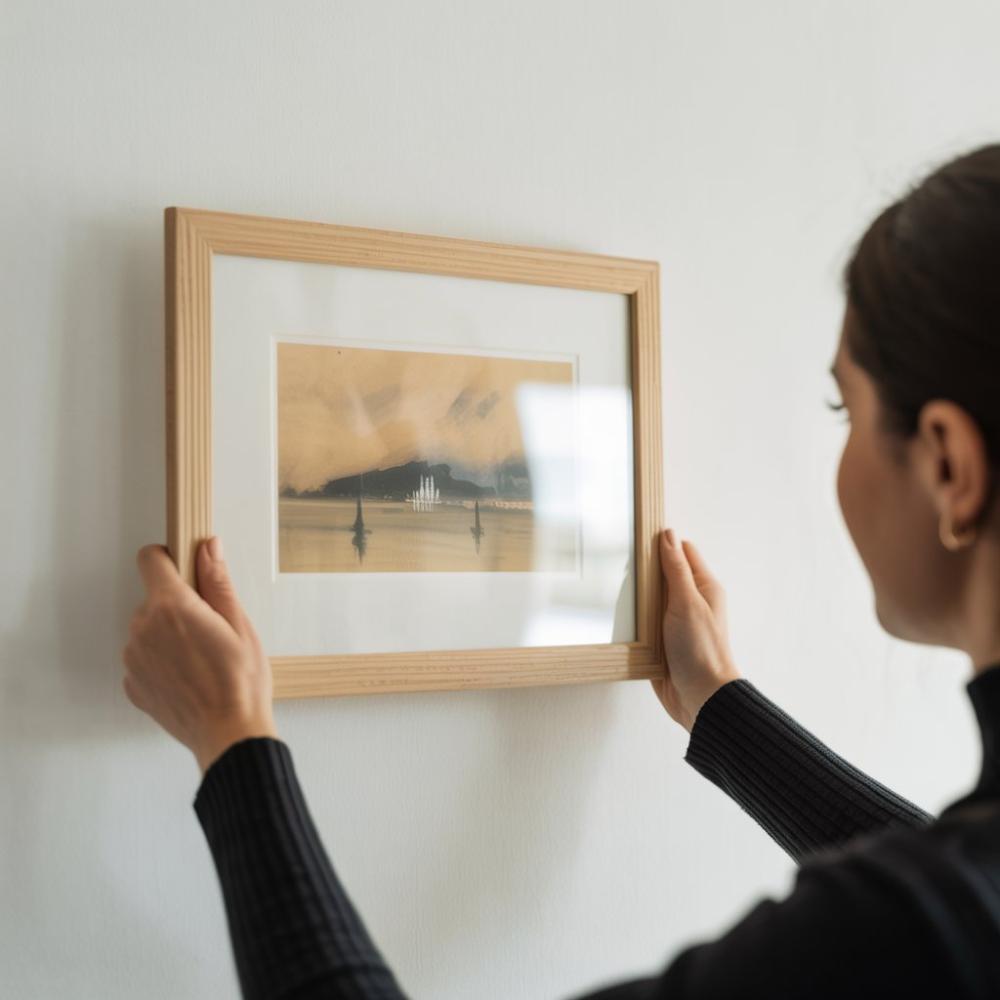This post includes affiliate links to products I personally own, photographed, and tested. That means I may earn a small commission—at no extra cost to you—if you click through and make a purchase. As an Amazon Associate, I earn from qualifying purchases. I only recommend tools I genuinely use and trust.
Why I Bought Three Stud Finders
I have to make a confession here. I worry and stress way more than normal about… well, everything. And that includes my fear that I am going to hit an electrical wire or water pipe when I am hanging anything on the wall. A good healthy dose of caution is warranted when hanging things on the walls, but I do go a little overboard in the worry department. So much so that I bought three stud finders. All three also detect live wires and metal. My plan was to use all three tools when I need to hang something and assume a live wire was present if even one of them detected it.
I watched probably every YouTube video out there and read so many reviews and comparisons of different stud finders. I picked three that got good reviews and high scores for accuracy and sensitivity, and were in my price range.
The Three Stud Finders I Tested
These are the three stud finders / wall scanners I bought and tested:
- JAXWQ Stud Finder Wall Scanner
- Franklin Sensors ProSensor M210
- Zircon StudSensor HD55 Stud Finder
Each one has a unique set of features. Here’s how they stack up side by side.
Swipe to see all three→
| Feature | JAXWQ 5-in-1 Stud Finder | Franklin Sensors ProSensor M210 | Zircon StudSensor HD55 |
|---|---|---|---|
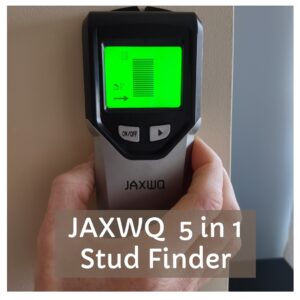 | 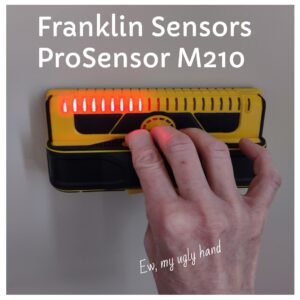 | 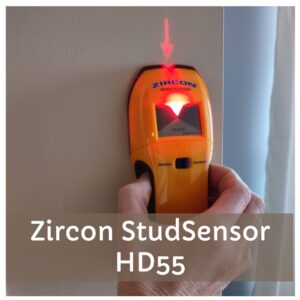 |
|
| Stud Detection | ✔️ Detects center and edges of wood studs | ✔️ Detects full width of studs using 13 sensors | ✔️ Detects edges of wood and metal studs |
| Deep Scan Mode | ✔️ Yes; up to 1.5 inches | ✔️ Auto adjusts for deep scan up to 1.7 inches | ✔️ Yes; up to 1.5 inches |
| Metal Detection | ✔️ Yes; separate metal mode detects metal objects | ✔️ Yes; detects metal as object in wall but no labeled metal mode, instructions explain interpretation needed | ✔️ Yes; detects metal studs (but does not differentiate between wood and metal) |
| Live Wire Detection | ✔️ Yes; detects live AC wires | ✔️ Yes; live wire sensing meter indicates location of live wires | ✔️ Yes; WireWarning® detection indicates presence of live AC wiring |
| Pipe Detection | ✔️ Detects pipes as hidden objects; no pipe mode—manual explains how to interpret. | ✔️ Detects pipes as hidden objects; no pipe mode—manual explains how to interpret. | ✔️ Detects pipes as hidden objects; no pipe mode—manual explains how to interpret. |
| Display Type | HD LCD display | 21 LED display | Enhanced LCD display with Target Spotlight |
| Ease of Use | Requires calibration before use | No calibration needed; instant detection | Requires calibration before use |
| Additional Features | Multiple scan modes; ergonomic design | Built-in bubble level; wide LED display | SpotLite® Pointer; over-the-stud indicator |
| Power Source | 9V battery (included) | 2 AA batteries (not included) | 9V battery (not included) |
| Price Range | Approximately $30 | Approximately $60 | Approximately $25 |
| BUY | See JAXWQ 5 in 1 Stud Finder on Amazon | See Franklin ProSensor M210 on Amazon | See Zircon Studsensor HD55 at Home Depot |
My Hands-On Experience
I have used all three and can attest that all of them are good at finding studs and identifying the edges of studs. And, for the most part, all three identified the same areas as having electrical wires. The JAXWQ wall scanner has a separate metal scan mode. The Zircon and Franklin do find metal studs but don’t have a separate metal mode and don’t really differentiate between metal and wood but the instructions include information for how to differentiate between different objects found behind the wall. All three have deep scan modes. Actually, the Franklin sensor supposedly automatically adjusts for depth so there’s no need to manually switch to a different deep scan mode (and it reads a tiny bit deeper than the other two).
Important Stud Finder Usage Tips
Be sure to read the instructions completely, (don’t just skim through!), before using ANY stud finder or wall sensor. Each one will provide instructions and information about that particular unit and using the unit with different wall materials, whether calibration is needed and how to do it (just a simple step, sounds more complicated than it is), and other tips like don’t rest your hand (the hand not holding the sensor) on the wall when using the sensor.
And please make sure to read the warnings in the instructions for each as well. They all have similar warning information and that is: Do not rely solely on the detector to locate items. Use other information sources (like visible entry of pipes, and wiring into walls, construction plans, etc.) and use common stud spacing practices (usually 16 in or 24 in apart). Never assume there are no live electrical wires in a wall. Always turn off electrical power, gas and water supplies before penetrating a surface.
My Favorite Stud Finder
Of course, using all three turned out to be not necessary and was overkill for sure. Now when I need to hang something, I find myself reaching most often for the Franklin ProSensor M210. I find it the most comfortable and easy to use. The only complaint I have about it is sometimes my hand is in the way of the electrical sensor. But I just move my hand and I can then see the sensor. And it has a little pencil hidden in it – just a cute extra bonus. I don’t think you can go wrong if you pick any one of these three….or get all three like I did!
For a complete list of tools and step-by-step tips for hanging wall art, check out my post: Beginner’s Guide to Hanging Wall Art.
Disclaimer
The information provided in this blog post is for general guidance only and reflects my personal experience using the stud finders reviewed. Because wall construction, materials, and conditions vary from home to home, it is the reader’s responsibility to determine the appropriate tools, hardware, and installation methods for their specific situation.
I am not responsible for any damage to walls, studs, artwork, or mounting hardware that may occur based on the use of this information. Always refer to the manufacturer’s instructions, test your wall type if unsure, and consult a professional if needed. Proceed at your own discretion.

